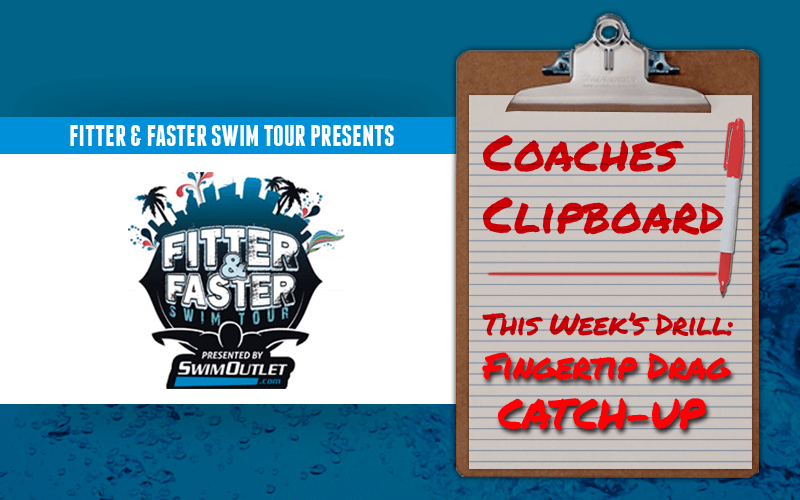Fitter And Faster Swim Drill Of The Week: Fingertip Drag Catch-Up

Welcome to the “Swim Drill of the Week” sponsored by The Fitter and Faster Swim Tour presented by Swimoutlet.com. Swimming World will be bringing you a drill, concept, or tip that you can implement with your team on a regular basis. While certain weeks may be more appropriate for specific levels of swimming (club, high school, college, or masters), Drill Of The Week excerpts are meant to be flexible for your needs and inclusive for all levels of swimming.
This week’s drill is Fingertip Drag Catch-Up for freestyle. This drill combines two common freestyle drills, catch-up drill and fingertip drag, in order to emphasize distance per stroke and a high elbow recovery. The drill itself is simple enough: swim down the pool doing catch-up drill while dragging your fingertips along the surface of the water on your recovery. While the execution of the drill is relatively straightforward, there are a few things you will want your swimmers to focus on while doing this drill.
First, this drill is meant to be slow. Catch-up drill inherently slows down your stroke tempo (and, naturally, your speed in the water) in order to emphasize a long, extended recovery. Combine that with fingertip drag, which also slows swimmers down as they focus on dragging their fingertips across the water on their recovery, and it becomes clear that getting down the pool quickly is not the idea of this drill.
Rather, swimmers should focus on being slow and deliberate with their strokes. This will give them the opportunity to even out their stroke and make sure their extension, recovery, and pull underwater are set up correctly.
Throughout the drill, it is also important for them to make sure your swimmers are maintaining a good body position, utilizing their core and legs to stay on the surface of the water. This reminds them that they need to use their whole body when swimming freestyle, not just their arms, and sets up good habits for when they return to full stroke swimming.
This is a great drill to do with beginning swimmers, as it combines multiple elements of the stroke in an easy to understand form. It is especially useful for swimmers who struggle with above water recovery, as it works on proper stroke tempo while also setting up a high elbow recovery and a strong, consistent kick. Happy swimming!
All swimming and dryland training and instruction should be performed under the supervision of a qualified coach or instructor, and in circumstances that ensure the safety of participants.




A classic.
thanks for explaining the reason behind the drill. It never made sense to me.